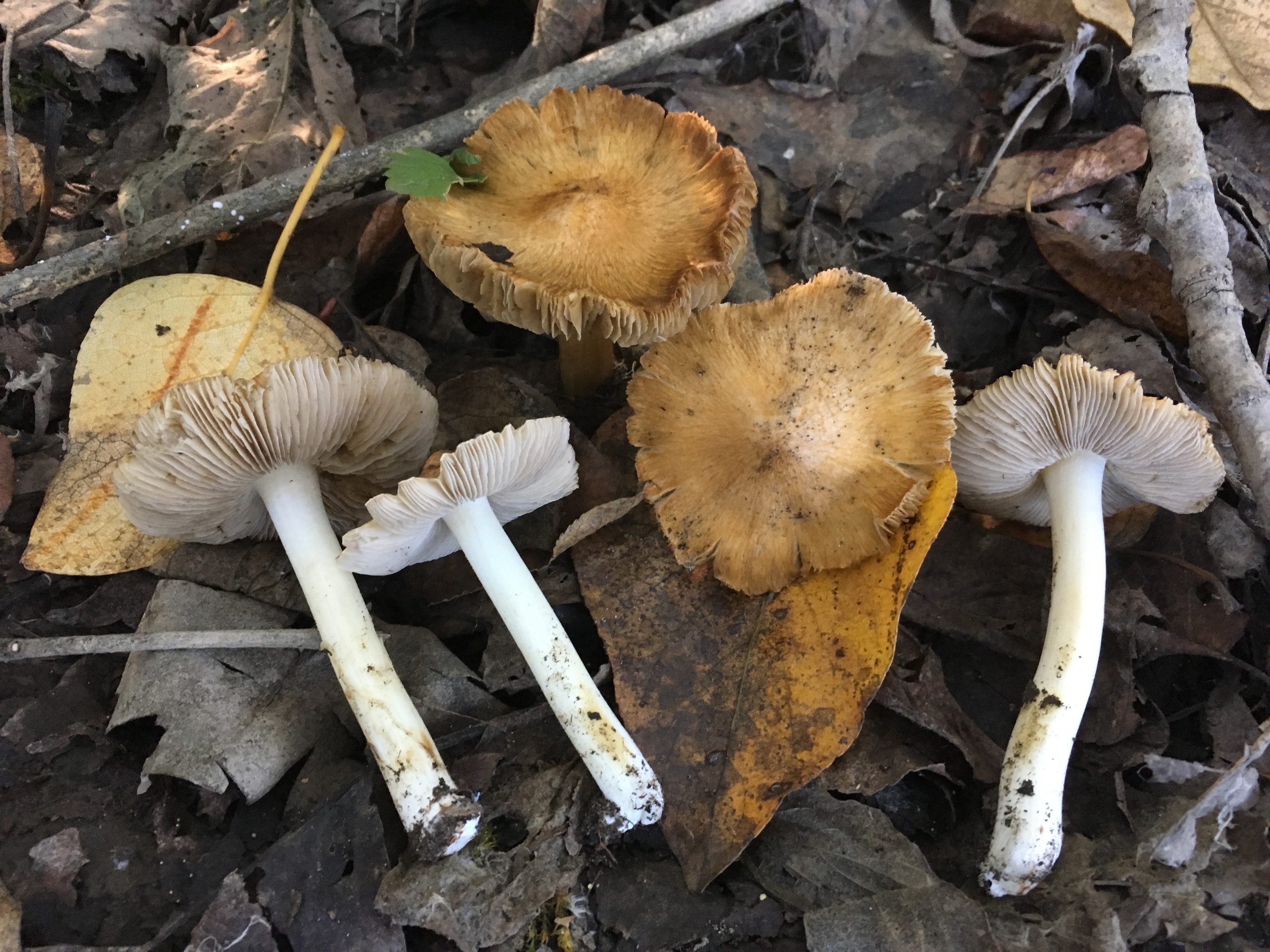
In the “1KFG: Deep Sequencing of Ecologically-relevant Dikarya” project (CSP1974), we aim to sequence additional sampling of genomic diversity within keystone lineages of plant-interacting fungi and saprophytic fungi that are of special ecological importance for understanding terrestrial ecosystems. In addition, comparative genome analysis with saprotrophic, mycorrhizal and pathogenic fungi will provide new insights into the specific and conserved adaptations associated with each fungal lifestyle.
Inosperma lanatodiscum (Kauffman) Matheny & Esteve-Rav.
Inosperma lanatodiscum is a widely distributed species of fiber cap (Inocybaceae), described from Michigan (Kaufmann 1918) and reported from eastern and western North America and Central America (Kropp et al. 2013; Matheny et al. 2020). The mushroom is characterized by a hoary-silky cap breaking into subzonate fibrils in age, nauseous odor, and a complete lack of cystidia. Inosperma lanatodiscum is ecologically important as an indicator species for forests when woody encroachment is removed and for riparian communities (Veach et al. 2015). The genome of Inosperma lanatodiscum will be an important tool for understanding community assembly and function of the Populus root microbiome.
References
Kauffman, C.H., 1918. The Agaricaceae of Michigan (Vol. 26). WH Crawford, state printers.
Kropp, B.R., Matheny, P.B. and Hutchison, L.J., 2013. Inocybe section Rimosae in Utah: phylogenetic affinities and new species. Mycologia, 105(3), pp.728-747.
Matheny, P.B., Hobbs, A.M. and Esteve-Raventós, F., 2020. Genera of Inocybaceae: New skin for the old ceremony. Mycologia, 112(1), pp.83-120.
Veach, A.M., Dodds, W.K. and Jumpponen, A., 2015. Woody plant encroachment, and its removal, impact bacterial and fungal communities across stream and terrestrial habitats in a tallgrass prairie ecosystem. FEMS Microbiology Ecology, 91(10).
